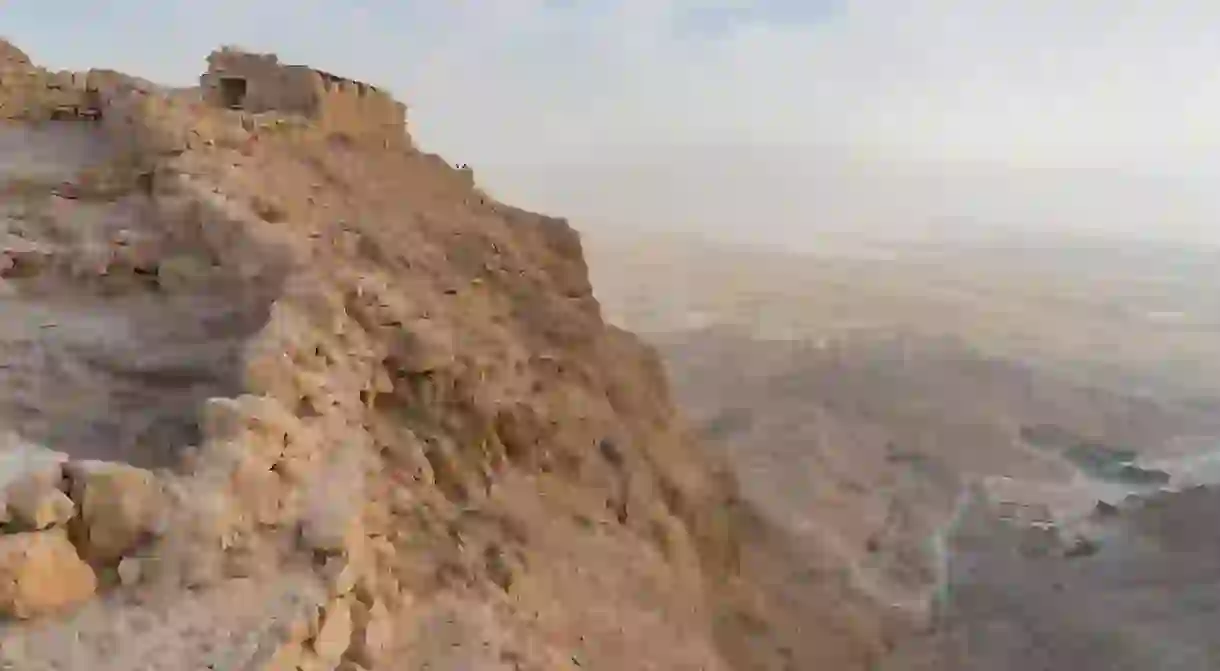A Guide to Visiting Masada National Park, Israel

Hikers and historians alike flock to Masada National Park, one of the most legendary landmarks in Israel. Here, you’ll find the mountain fortress of Masada, built in 30 BCE atop an enormous mountain plateau, adjacent to the Dead Sea.
Around 750,000 visitors ascend the hilltop to Masada fortress each year to peek inside the millennia-old ruins. From the top, it offers unrivalled views of the Judean Desert and insight into one of the key canonical events for Israelis: the mass suicide in 73 CE of 967 Jewish rebels, holed up in the Masada fortress, for whom death was preferable to submission to the Romans. Read our guide to Masada National Park to make the most of your visit.
Climb the Masada fortress, cruise the Dead Sea and enjoy so much more by booking yourself onto a seven-day tour of Jerusalem, exclusively on Culture Trip.
What to see in Masada National Park
Among the 2,000-year-old ruins, you’ll find two palaces fortified by Herod the Great as a luxurious and comfortable safe haven. Excavations in the 1960s uncovered bathhouses, extensive dining and entertaining facilities and a well-provisioned storehouse. The Masada fortress also boasted at least 14 cisterns fed by aqueducts, which supplied the city with drinking and bathing water. The complex was accessible only by the Snake Path, a long, winding walkway still used today; this made Masada almost impregnable.
In 70 CE, the last remaining Jewish rebels against Roman rule fled to Masada. When Roman forces under the future Emperor Vespasian laid siege to Masada in 73 CE, they encircled it with walls and created an enormous ramp to convey their battering rams up to the weakest point of Masada. Known today as the Roman Ramp, it now leads visitors to the top of Masada.
Apart from buildings, there are several points of interest, including a synagogue from the Second Temple era and the remains of a Byzantine church of the 5th and 6th centuries with exquisite mosaic floors. However, the most stunning attraction is the magnificent panoramic view across the Judean desert to the Dead Sea.

Best time to visit Masada National Park
The best times of year to visit Masada are March to June and September to November to avoid excessive heat and rain. Although an excursion is easily managed in one day, spending a night at either Masada’s camping site or a nearby hostel enables you to enjoy the rugged landscape, transformed during sunrise and sunset.

How to get to Masada National Park
Masada National Park is 160km (100mi) from Tel Aviv, and takes just over two hours to reach by car. Jerusalem is slightly closer at 100km (62mi) away, a 90-minute drive. The easiest way to reach Masada is by hiring a car or joining a tour group from one of the major cities.
When you arrive at Masada, the plateau is accessible via cable car on the east side of the mountain – the easiest way to the top. The 0.7km (0.4mi) Roman Ramp is the least challenging walk up to the fortress. The 2.7km (1.7mi) Snake Path is open one hour before sunrise at the West Entrance. Fit and experienced hikers often choose the 3.7km (2.3mi) Runner Path, which affords stunning views but is steep, rocky and less well maintained than the other two.

What else to do near the Masada National Park
Combine a visit to Masada with the mineral-rich Dead Sea, the lowest point of the earth. Since biblical times, visitors have taken advantage of the health benefits of the Dead Sea mud. The coast is dotted with spas and wellness centres. History buffs can visit Qumran, where the Dead Sea Scrolls were discovered, and Sodom on the southern shore, where the impressive rock salt clusters gave rise to the biblical story of Lot’s wife. Just north of Masada, the lush oasis and nature reserve of Ein Gedi is as much a sanctuary today as it was for King David in his day.

Top tips for visiting Masada National Park
There are numerous options for visiting Masada National Park, including bus tours from Tel Aviv, Jerusalem and the Dead Sea, with some leaving before dawn to catch the sunrise. Visiting Masada is physically challenging. Be sure to wear sturdy foot gear (such as hiking boots) as well as loose, comfortable clothing to protect yourself from sunburn. Bring a hat, sunglasses, sunscreen and a large bottle of water.

Entry fees including the cable car both ways:
77 NIS (£17) for adults; 45 NIS (£10) for children
Entry without the cable car (walk the Snake Path):
31 NIS (£7) for adults; 16 NIS (£3.60) for children
Entry with cable car one way (Snake Path or Roman Ramp down):
59 NIS (£13) for adults; 31 NIS (£7) for children.













